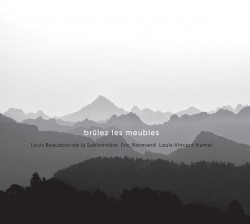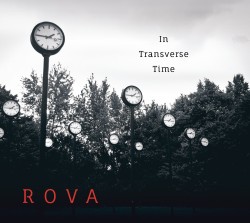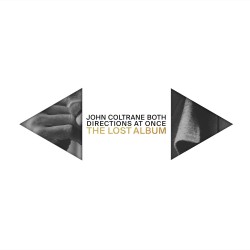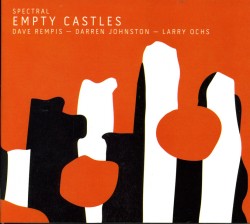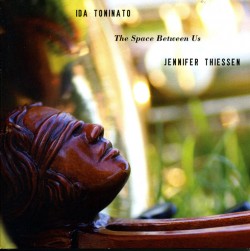A quarter of a century is an important milestone, even more so when the 25-year-old is a jazz festival rather than a person. Yet from its minimalist beginnings, the Guelph Jazz Festival (GJF) has managed to expand and intensify its programs. As befits a young adult, this year’s festival, September 12 to 16, features some new acquaintances as well as old friends in diverse settings.
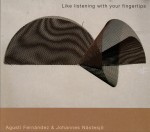 One new visitor, who plays both a noon-hour solo concert at the University of Guelph’s MacKinnon building on September 13 and an evening duo on September 14 with Montreal alto saxophonist Yves Charuest at the River Run Centre’s Cooperators Hall, is Catalan pianist Agustí Fernández. Fernández is a sophisticated expert in such settings, as he proves on a duo CD with Swedish bassist Johannes Nästesjö, Like listening with your fingertips (Konvoj Records KOR 013 konvojart.com). Fernández, who can be as lyrical as he wishes when playing in any sized group, angles this musical partnership on the disc’s single improvised track by spending as much time as pseudo-percussionist as on the keyboard. Whacking the case, key frame and strung back of the instrument plus plucking, stopping and sliding the strings to create comparable reverberations, his actions match Nästesjö’s chunky thrusts and spiccato swells that are only a little less husky when bowed. The few times the pianist moves from soundboard stimulation to complete keyboarding, his cascading patterns feature speedy kinetics or high-frequency slaps. Eventually the two reach dynamic animation, where sul ponticello arco sprawls from the bassist are decorated with single keystrokes from the pianist, like diamonds sparking on a jeweller’s bolster.
One new visitor, who plays both a noon-hour solo concert at the University of Guelph’s MacKinnon building on September 13 and an evening duo on September 14 with Montreal alto saxophonist Yves Charuest at the River Run Centre’s Cooperators Hall, is Catalan pianist Agustí Fernández. Fernández is a sophisticated expert in such settings, as he proves on a duo CD with Swedish bassist Johannes Nästesjö, Like listening with your fingertips (Konvoj Records KOR 013 konvojart.com). Fernández, who can be as lyrical as he wishes when playing in any sized group, angles this musical partnership on the disc’s single improvised track by spending as much time as pseudo-percussionist as on the keyboard. Whacking the case, key frame and strung back of the instrument plus plucking, stopping and sliding the strings to create comparable reverberations, his actions match Nästesjö’s chunky thrusts and spiccato swells that are only a little less husky when bowed. The few times the pianist moves from soundboard stimulation to complete keyboarding, his cascading patterns feature speedy kinetics or high-frequency slaps. Eventually the two reach dynamic animation, where sul ponticello arco sprawls from the bassist are decorated with single keystrokes from the pianist, like diamonds sparking on a jeweller’s bolster.
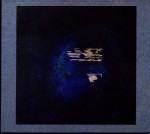 One musician who Fernández, and seemingly half of the international creative musicians, has played with often, is American bassist William Parker, who gives a solo concert on September 15 at Royal City Church. Besides double bass, Parker, who has played at the GJF many times, often expresses himself on a six-or-eight string doussin gouni and African wooden flute. Lake of Light – Compositions for AquaSonics (Gotta Let It Out GLIO 19 CD gottaletitout.com), is even more unique in that it features Parker and three associates, Jeff Schlanger, Anne Humanfeld, both of whom are visual artists, and percussionist Leonid Galaganov, improvising with the AquaSonic, which can be both bowed like a string instrument or struck like an idiophone. The results are audacious, adventurous and atonal in equal measures. Each of the seven soundscapes reference sci-fi film soundtrack bleeps as much as they resemble polyphonic timbres from steel drums, wooden flutes, vibraphones, mridangams and güiros. On tracks like Lake of Light, Parker’s double bass prowess is such that each stroke brings out not only one tone but also all the pseudo-string’s squealing extensions. The most insouciant and least percussive collaboration sounds like it could come from an offbeat string ensemble, with the finale both contrapuntal and chromatic. In contrast, Helium Butterfly is all steel-pan-like bangs and bops, with the echoes multiplying from piccolo-like airs and rushed mallet strokes into deepened riffs. These floating puffs, spiccato bowing and vibrating smacks join for the final track, Action. Here all players continuously rattle the idiophones so that wood and metal responses are directed towards group resonation.
One musician who Fernández, and seemingly half of the international creative musicians, has played with often, is American bassist William Parker, who gives a solo concert on September 15 at Royal City Church. Besides double bass, Parker, who has played at the GJF many times, often expresses himself on a six-or-eight string doussin gouni and African wooden flute. Lake of Light – Compositions for AquaSonics (Gotta Let It Out GLIO 19 CD gottaletitout.com), is even more unique in that it features Parker and three associates, Jeff Schlanger, Anne Humanfeld, both of whom are visual artists, and percussionist Leonid Galaganov, improvising with the AquaSonic, which can be both bowed like a string instrument or struck like an idiophone. The results are audacious, adventurous and atonal in equal measures. Each of the seven soundscapes reference sci-fi film soundtrack bleeps as much as they resemble polyphonic timbres from steel drums, wooden flutes, vibraphones, mridangams and güiros. On tracks like Lake of Light, Parker’s double bass prowess is such that each stroke brings out not only one tone but also all the pseudo-string’s squealing extensions. The most insouciant and least percussive collaboration sounds like it could come from an offbeat string ensemble, with the finale both contrapuntal and chromatic. In contrast, Helium Butterfly is all steel-pan-like bangs and bops, with the echoes multiplying from piccolo-like airs and rushed mallet strokes into deepened riffs. These floating puffs, spiccato bowing and vibrating smacks join for the final track, Action. Here all players continuously rattle the idiophones so that wood and metal responses are directed towards group resonation.
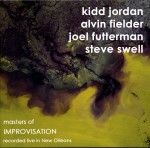 Parker often works with trombonist Steve Swell, whose Soul Travelers combo shares the bill at Cooperators Hall September 14 with Fernández/Charuest. Tellingly, one of the trombonist’s newer CDs, Masters of Improvisation (Valid Records VR-1016 validrecords.com) lacks a bassist – but includes tenor saxophonist Kidd Jordan, pianist Joel Futterman and drummer Alvin Fielder, all of whom have played with Parker. Within the three live selections are prime instances of in-the-moment improvisation. Moving from slow boil to eruptive textures, the tunes unroll on a carpet of cymbal raps, pinpointed smacks and timed rolls from Fielder, as Futterman’s contrapuntal contributions move from laid-back comping to kinetic keyboard scampers, while the saxophonist and trombonist intertwine textures like a 21st-century Archie Shepp-Roswell Rudd duo. Stuttering grace notes from Swell and undulating coloratura slurs from Jordan often define the theme. Deft enough to tunefully pivot 180 degrees on the final Sawdust on the Floor, the quartet uses triple-tongued brassiness, reed overblowing and keyboard sprinkles to turn the tune into a close cousin of Lonely Avenue, with the percussion backbeat and gutbucket smears that are part of the heritage of New Orleans, where this concert was recorded. Earlier, the nearly 26-minute Residue allows each member enough space for a multiphonic, multi-faceted solo. Brief celesta-like pings set up the track that soon has the horn players digging deep into their instruments’ innards as driving keyboard-pounding, sky-high graceful trombone blasts and seemingly limitless reed variations not only allow each to isolate almost any timbre and all its extensions, but create such passion that just when it appears that the track couldn’t get more intense, it does. By the finale, Swell and Jordan are exchanging briefer and briefer sound patterns at high-pitches that spin out into a graceful textural summation, with a concluding drum roll and cymbal splash leading back to the blues.
Parker often works with trombonist Steve Swell, whose Soul Travelers combo shares the bill at Cooperators Hall September 14 with Fernández/Charuest. Tellingly, one of the trombonist’s newer CDs, Masters of Improvisation (Valid Records VR-1016 validrecords.com) lacks a bassist – but includes tenor saxophonist Kidd Jordan, pianist Joel Futterman and drummer Alvin Fielder, all of whom have played with Parker. Within the three live selections are prime instances of in-the-moment improvisation. Moving from slow boil to eruptive textures, the tunes unroll on a carpet of cymbal raps, pinpointed smacks and timed rolls from Fielder, as Futterman’s contrapuntal contributions move from laid-back comping to kinetic keyboard scampers, while the saxophonist and trombonist intertwine textures like a 21st-century Archie Shepp-Roswell Rudd duo. Stuttering grace notes from Swell and undulating coloratura slurs from Jordan often define the theme. Deft enough to tunefully pivot 180 degrees on the final Sawdust on the Floor, the quartet uses triple-tongued brassiness, reed overblowing and keyboard sprinkles to turn the tune into a close cousin of Lonely Avenue, with the percussion backbeat and gutbucket smears that are part of the heritage of New Orleans, where this concert was recorded. Earlier, the nearly 26-minute Residue allows each member enough space for a multiphonic, multi-faceted solo. Brief celesta-like pings set up the track that soon has the horn players digging deep into their instruments’ innards as driving keyboard-pounding, sky-high graceful trombone blasts and seemingly limitless reed variations not only allow each to isolate almost any timbre and all its extensions, but create such passion that just when it appears that the track couldn’t get more intense, it does. By the finale, Swell and Jordan are exchanging briefer and briefer sound patterns at high-pitches that spin out into a graceful textural summation, with a concluding drum roll and cymbal splash leading back to the blues.
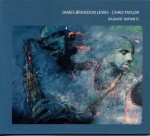 Young enough to be Jordan’s grandson, but sometimes playing in the same free jazz style, is tenor saxophonist James Brandon Lewis, whose trio plays at the Market Square stage on September 15. Radiant Imprints (Off CD 038 jblewis.com), which features him in a duo with drums/mbira player Chad Taylor, proves that he’s his own person though, since he mixes ecstatic outbursts with well-paced melodies. Almost half the tracks whoop and howl as both players push past buoyant multiphonics to reed snarls and snorts and ambulatory drum pacing whose splayed extensions touch on John Coltrane’s most outré improvising as they slip in and out of various keys and pitches. But while Trane is an acknowledged influence, pieces such as Imprints and Radiance confirm that the duo can move past these restrictions. The latter features an expansive bass drum-tinged intro, which presages a saxophone groove that relates to pre-modern tenacious tenor players like Ben Webster and Arnett Cobb. As the tenor slurps and swings, the irregular vibrations and note extensions operate as almost dual call-and-response. Imprints has the same sort of relaxed feel, but with flutter-tongued dips from mid-range to the horn’s darker registers for added emphasis during solos. By the mid-point, Taylor’s backbeat meets up with the saxophonist, who works in a quote from A Love Supreme and exits with pure air blown through his instrument. Another distinguishing feature is on tracks such as First Born, when Taylor uses the glockenspiel-like resonance of the mbira with the facility of a guitarist to set up and stretch out the accompaniment to Lewis’ dissonant but artful interpretations.
Young enough to be Jordan’s grandson, but sometimes playing in the same free jazz style, is tenor saxophonist James Brandon Lewis, whose trio plays at the Market Square stage on September 15. Radiant Imprints (Off CD 038 jblewis.com), which features him in a duo with drums/mbira player Chad Taylor, proves that he’s his own person though, since he mixes ecstatic outbursts with well-paced melodies. Almost half the tracks whoop and howl as both players push past buoyant multiphonics to reed snarls and snorts and ambulatory drum pacing whose splayed extensions touch on John Coltrane’s most outré improvising as they slip in and out of various keys and pitches. But while Trane is an acknowledged influence, pieces such as Imprints and Radiance confirm that the duo can move past these restrictions. The latter features an expansive bass drum-tinged intro, which presages a saxophone groove that relates to pre-modern tenacious tenor players like Ben Webster and Arnett Cobb. As the tenor slurps and swings, the irregular vibrations and note extensions operate as almost dual call-and-response. Imprints has the same sort of relaxed feel, but with flutter-tongued dips from mid-range to the horn’s darker registers for added emphasis during solos. By the mid-point, Taylor’s backbeat meets up with the saxophonist, who works in a quote from A Love Supreme and exits with pure air blown through his instrument. Another distinguishing feature is on tracks such as First Born, when Taylor uses the glockenspiel-like resonance of the mbira with the facility of a guitarist to set up and stretch out the accompaniment to Lewis’ dissonant but artful interpretations.
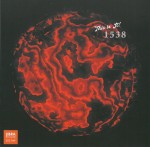 If mbira and saxophone seems an unusual combination, so too is a trio of trumpet, piano and percussion, featured at the GJF on September 15 at Cooperators Hall. This afternoon gig on a double bill with the Dutch-Canadian Groven, Lumley & Stadhouders group, is the GJF debut of the 1538 trio of pianist Satoko Fujii, and trumpeter Natsuki Tamura, who have both played the GJF before, with drummer Takashi Itani. This Is It! (Libra Records 203-049 librarecords.com), the trio’s CD, convincingly demonstrates how easily the unfazed Itani adds his talents to the duo, which after decades of playing together anticipates each other’s every move. Named for the Celsius melting point of iron, this CD justifies the title. For instance, the drummer’s timed side ruffs on Prime Number push Fujii’s staggering chord exploration and Tamura’s mercurial grace notes into harmonic proximity so that the result is a unique squirming theme. And the drummer performs a similar gluing on Riding on the Clouds, but this time his prod is temple bell-like echoes, in sync with the trumpeter’s distantly strained tones and the pianist’s minimized chromatic movements. Swoop, however, proves that the three don’t have to operate at a hushed level, with Fujii’s high-frequency key pummelling and percussive arpeggios and Itani’s nerve beats and cymbal clashes creating a showcase where frequently-repeated note patterns define progress.
If mbira and saxophone seems an unusual combination, so too is a trio of trumpet, piano and percussion, featured at the GJF on September 15 at Cooperators Hall. This afternoon gig on a double bill with the Dutch-Canadian Groven, Lumley & Stadhouders group, is the GJF debut of the 1538 trio of pianist Satoko Fujii, and trumpeter Natsuki Tamura, who have both played the GJF before, with drummer Takashi Itani. This Is It! (Libra Records 203-049 librarecords.com), the trio’s CD, convincingly demonstrates how easily the unfazed Itani adds his talents to the duo, which after decades of playing together anticipates each other’s every move. Named for the Celsius melting point of iron, this CD justifies the title. For instance, the drummer’s timed side ruffs on Prime Number push Fujii’s staggering chord exploration and Tamura’s mercurial grace notes into harmonic proximity so that the result is a unique squirming theme. And the drummer performs a similar gluing on Riding on the Clouds, but this time his prod is temple bell-like echoes, in sync with the trumpeter’s distantly strained tones and the pianist’s minimized chromatic movements. Swoop, however, proves that the three don’t have to operate at a hushed level, with Fujii’s high-frequency key pummelling and percussive arpeggios and Itani’s nerve beats and cymbal clashes creating a showcase where frequently-repeated note patterns define progress.
These concerts and others confirm that the GJF offers maturity tempered with experimentation – and it’s these qualities which draw fans to the city every September.
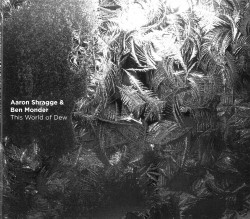 This World of Dew
This World of Dew

